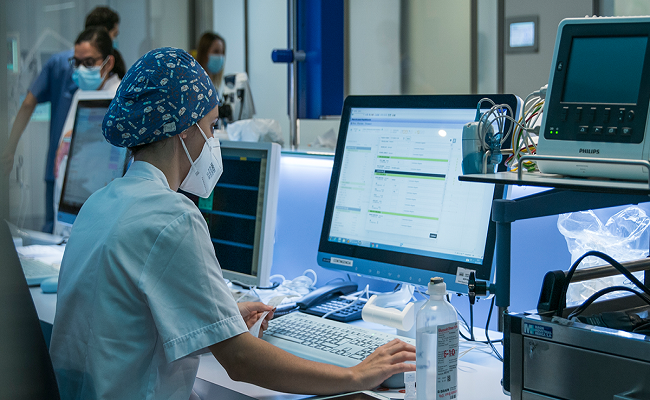In today's connected society, technology has become an indispensable tool in the healthcare industry. From electronic health records to cutting-edge diagnostic equipment, advanced technologies are transforming how healthcare professionals deliver care. However, as we embrace these innovations, it's essential to remember that the human touch remains at the heart of compassionate care. Striking the right balance between technological advancements and personalized patient interactions is a delicate dance that healthcare organizations must master to truly thrive.
The Importance of Technology in Healthcare
The advent of technology in the healthcare industry has ushered in a new era of data-driven decision-making, revolutionizing patient outcomes. With the ability to collect and analyze vast amounts of data, healthcare professionals can now make more informed choices, tailoring treatments and interventions to individual patient needs. This data-driven approach not only enhances the effectiveness of care but also minimizes the risk of adverse events and complications.
Furthermore, technology has played a pivotal role in streamlining processes and improving efficiency within healthcare organizations. From automated appointment scheduling to electronic prescribing systems, these technological advancements have reduced administrative burdens, freeing up valuable time for healthcare professionals to focus on delivering high-quality care.
Seamless communication and collaboration among healthcare teams are also facilitated by technology. Electronic health records (EHRs) and secure messaging platforms enable real-time information sharing, ensuring that all members of the care team have access to the most up-to-date patient data, ultimately leading to better coordination and continuity of care.
The Human Touch: The Essence of Compassionate Care
While technology has undoubtedly transformed the healthcare landscape, the human touch remains an irreplaceable component of compassionate care. The presence of empathy, active listening, and genuine human connection can profoundly impact a patient's overall experience and well-being. Healthcare professionals who take the time to understand their patients' emotional and psychological needs, in addition to their medical concerns, can build trust and foster a positive healing environment.
Striking the right balance between technology and personal care is essential. While technology can streamline processes and enhance decision-making, it should never overshadow the importance of human interaction. Patients seek not only medical expertise but also emotional support and reassurance during their healthcare journey.
Healthcare organizations that prioritize both technological advancements and compassionate care are better positioned to deliver a truly holistic approach to patient care. By embracing the power of technology while maintaining a strong focus on the human element, these organizations can create an environment where patients feel valued, understood, and supported throughout their journey to better health.
Managed IT Services for Healthcare: A Comprehensive Solution
In the ever-evolving landscape of healthcare technology, managed IT services have emerged as a comprehensive solution tailored to the unique needs of healthcare organizations. These specialized services provide a holistic approach to IT management, addressing the intricate challenges faced by healthcare providers.
Compliance with industry regulations and data security standards is of paramount importance in the healthcare sector. Managed IT services ensure that organizations remain compliant with stringent guidelines, such as HIPAA and HITECH, safeguarding sensitive patient information and mitigating the risk of data breaches.
By outsourcing their IT needs to experienced professionals, healthcare providers can offload the burden of managing complex systems and infrastructures. This allows them to direct their focus towards delivering exceptional patient care, while leveraging cutting-edge technology solutions that enhance efficiency, streamline workflows, and improve overall outcomes.
Strategies for Balancing Care and Technology
Achieving a seamless integration of technology and compassionate care requires a multifaceted approach. One crucial strategy is investing in user-friendly and intuitive healthcare IT solutions that prioritize ease of use for both healthcare professionals and patients. Intuitive interfaces and seamless integration can minimize disruptions to the care delivery process, ensuring that technology enhances rather than hinders the patient experience.
Promoting digital literacy and continuous training for healthcare professionals is equally important. As technology continues to evolve rapidly, equipping staff with the necessary skills and knowledge to effectively utilize new systems and tools is essential. Ongoing training programs can foster a culture of lifelong learning and adaptability, ensuring that healthcare teams remain proficient in leveraging technology to its fullest potential.
Furthermore, fostering a culture of collaboration between IT and clinical teams is vital for achieving a harmonious balance between care and technology. By breaking down silos and encouraging open communication and shared decision-making, healthcare organizations can align their technological initiatives with the practical needs of healthcare providers, ultimately delivering a more cohesive and patient-centric experience.
Conclusion
In the rapidly evolving healthcare landscape, striking the right balance between care and technology has become a paramount concern. While technological advancements have the potential to revolutionize patient outcomes and streamline processes, they must be carefully integrated in a manner that preserves the essence of compassionate care.
Healthcare IT leaders play a crucial role in driving this delicate balance. It is their responsibility to champion innovative solutions that enhance efficiency and data-driven decision-making, while simultaneously ensuring that the human touch remains at the forefront of the patient experience. By fostering a culture of collaboration between IT and clinical teams, and investing in user-friendly technologies, healthcare organizations can seamlessly merge cutting-edge innovations with personalized, empathetic care delivery.
As we look to the future, it is imperative that healthcare organizations embrace a mindset of continuous improvement, actively seeking out and adopting technologies that support their mission of providing exceptional patient care. However, this pursuit of technological excellence must be grounded in a deep commitment to preserving the human connection that lies at the heart of the healthcare profession.
Healthcare IT managers and business leaders should prioritize the seamless integration of technology and compassionate care. Leverage the power of innovative solutions to enhance efficiency, streamline processes, and drive data-driven decision-making, but never lose sight of the fundamental importance of human interaction, empathy, and personalized care. By striking this delicate balance, healthcare organizations can truly thrive, delivering unparalleled patient experiences and driving positive, lasting health outcomes.
